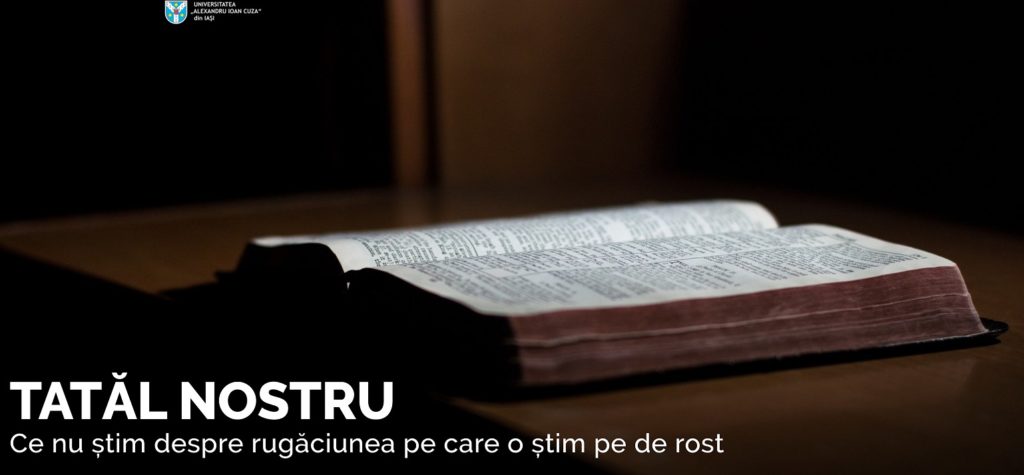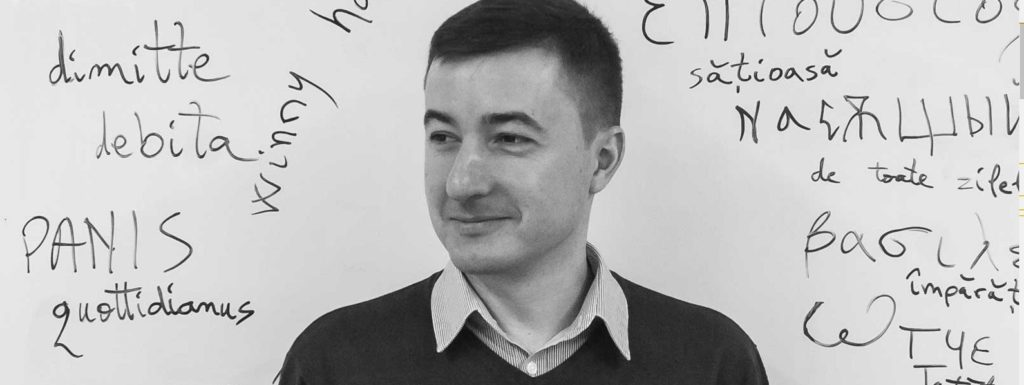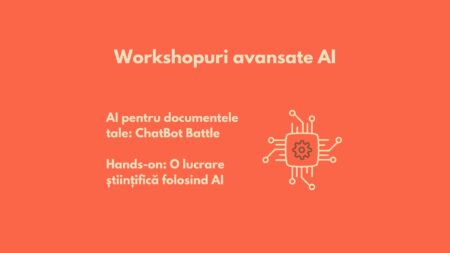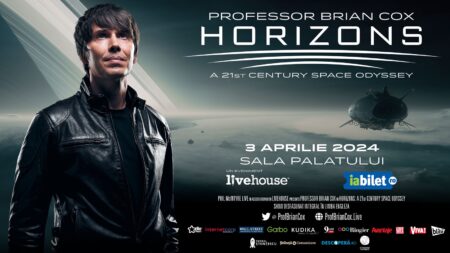What's happening before science becomes an article? I thought it would be useful to explain a bit of the inner kitchen of writing an article. I chose one that was based on a series of researches about the "Our Father" prayer. It was unexpectedly successful, with about 200,000 people reached without paid advertising.
I hope to be interesting for both scientists - to better understand what is involved actually working with a communicator, and for those in the public relations offices of universities and research institutions.
I'll explain step by step
- Communication strategy for this topic
- How I collaborated with the researcher every step of the way
- How I found the subject
- How I organized the text
- Why my team created an infographic
- How we planned the photoshoot
- How important was the collaboration for the website
- How long did it all last
- What results did it have
The original article is here, you can read it. In summary, the article traces how the meaning of the Lord's Prayer has changed since the earliest translations through the more than 200 versions that have circulated. Sometimes the meaning of the expressions has changed completely.

Strategy communication
I wrote the article in 2018, as a way of communicating science for "Alexandru Ioan Cuza" University of Iasi, in other words as a way of promoting the University, and not as a journalistic approach. I wanted to highlight the work of those who devote hundreds and thousands of hours to investigate certain subjects, about which the general public knows nothing. What's more, research work is seen as so remote from people's everyday lives that the public don't even think they should know anything about it or that it would be of any use to them.
For a long time, I have been convinced that any communication strategy in a university and research institution must have this type of communication at its core, focused on research results, on bringing to light what's happening in those labs and demonstrating the relevance to society and transforming the public into an enthusiastic supporter.
How I chose subject
Starting from the fact that research is considered as an approach "detached" from everyday life people's everyday lives, I have deliberately chosen a research topic with which everyone - believer or not - is familiar with: the Our Father Prayer. I was interested in the research of Iosif Calmară, who has dedicated several years of his life to study, word by word, of how exactly the text of the prayer changed, sometimes taking on entirely different meanings from the original.
The moment in which a topic is launched is very important in communication. I aimed to have it ready in the week before Orthodox Easter, when people consume less politics and prefer more spiritual content. In fact, the timing was so important that I can say it was the other way around: the timing chose the subject. I wanted to launch a topic of science relevant to the pre-Easter period.
Type of research was also an intentional choice. When people think of explosions, lasers, microscopes, laboratories. I wanted to show that research is not a concept limited to this. There is research in more areas than just "real science".
Finding the subject was half luck, half patience. I had learned of this subject six (6) years ago, when I had written another article about story the first Romanian Bible. In the interview at the time, I had learned that there was a PhD student at the Faculty of Letters who had dedicated his entire PhD (three or four years) to studying the Lord's Prayer. I set out to find out what he studied and I haven't forgotten. When I was able to devote more time to communicating science, which was six years later, I did exactly what I promised myself: I looked up all the articles written by that doctoral student and read them cover to cover on the ones on the Our Father prayer.
How I collaborated with the researcher
I wrote to Joseph Calmară, meanwhile employed at UAIC in a research position, to offer me a interview on the subject of the Lord's Prayer, more precisely on the subject of the article "History of a difficult passage from the Our Father in Romanian: Our Bread for Being".
I'd read everything he'd written, taken notes, looked up everything I didn't understand. I had to read about 5-6 linguistics articles, not easy to understand, but it was important to go to the interview prepared. Even so, the discussion was much more interesting than I expected.
About how long has the researcher dedicated to this collaboration and in what steps of the process:
- Interview: 1h30
- Emails for clarifications, misunderstandings of mine
- Review two or three drafts I wrote to eliminate any scientific mistakes
- Photo session: 1h
- Collaboration for the infographic, 3-4 revisions
- Final OK
In total, it would be 4-5 hours that Iosif Calmară offered me to support my idea. Of course, this is added to the 3-4 years of his life he dedicated to research.
How I organized the text
Because most Romanians knows and can follow the Our Father prayer in their own minds, I have chosen to organize the text by following the words of the prayer and showing the changes they have gone through in the more than 200 translations that have circulated in Romanian.

Why my team created an infographic
Infographics, illustrations, explanatory diagrams are extremely important in communicating science. Thanks to they make it easier for readers to understand the subject of research or a particular concept. In addition, for those who have very little time, an infographic will tells in just a few seconds what the text is about.
I have chosen one idea to convey through illustration - that of word history. I shy away from drawings that want to say EVERYTHING.
The infographic I made it myself, because I was very clear about what I wanted to convey and I have some basic knowledge of graphic editing. It was a mistake. It turned out a semi-amateur graphic. A graphic designer will always illustrate an idea better and more interestingly. Pay them, because they're worth it.
How we planned the photoshoot
Especially in public relations, it is very important that every article has photos. I don't have enough lines to underline this information. Consider that the work of visual artists - photographers, graphic designers, web designers - is equally important as the work of the people who wrote the text. I am aware that if the article looked less good, it would have been much less read and open.
For photos I collaborated with the university's graphic designer/ photographer/ designer, Bogdan Panțir, whose talent I greatly admire. I didn't tell him what to do, I never do that, but I made sure to tell him about the subject and how I would present it in text. With every topic I worked on with a team, I hoped I could people with my enthusiasm for the idea so that they would come up with ideas. It worked every time.
The vision of the framing, the photography, even the fact that it was all black and white is all thanks to Bogdan Panțir.

How important was the website
As I said, if the article was simply text on a website, it would have 10-20 times fewer readers. The fact that it was highlighted by graphics is the result of good collaboration I had with the person in charge at the time of the University's website. The layout was 100% his idea and so was implementation. For this article, he invented a whole new kind of layout on the website, in which the visuals and the texts are well balanced.
How long did it all last
For this article, I worked the equivalent of a working week. From research, researching articles, preparing for the interview, transcribing, writing writing two or three drafts, exchanging corrections and emails with the researcher, making and editing the infographics, working with the photo team and website and some hour or two refreshing the article to see how beautiful it is 😊. Plus monitoring the effect afterwards.
If I add the time of the researcher and each person on the team, it would total about two weeks.
In communication, two weeks is a luxury and I'm aware of that. But communicating science takes time and effort, because the topics are much more complex, they have to be very well understood, and the institution can't afford to embarrass itself because of a scientific mistake in the article.
Instead, I think that the investment of time is well rewarded for the impact that a science communication article compared to a classic public relations article.
Was it a success or not?
As a specialist in public relations, I pursue several objectives through communication articles science. For important discoveries, for example, it is important that the information is picked up in the media and social media.
That was not the case here.
In this case, the objective was to address the general public directly on a topic of interest on university's website, in the context of a very broad interest especially through social media.
Did he make it?
Here is a statistics on the spread of the article on social media - made public, via sharedcout.com platform. Plus, I can tell you (but I don't have enough admin rights to make a print out screen) that the organic reach has reached 200,000 people on Facebook.

Is it a lot? Is it little?
In the case of "Alexandru Ioan Cuza" University of Iasi, it was the most read article of 2018.
I used the sharedcout.com platform to make a comparison with a science communication paper from Oxford University. I chose one of the most popular ones I found, about Coronavirus: Social distancing works: Here's the Maths. Most have a much smaller impact.

You can use the SharedCount to see such statistics and make your own comparisons.
Public relations efforts need to be measured and optimised. But I also believe that universities and research institutions need to do more than just promote themselves nicely.
In my view, there is a moral obligation to explain, in a way that is understandable to the general public, what is happening there with the public's money. It does not have to be the audience's obligation to learn about it in order to earn the right to know what the research results are. We should not require the public to read technical articles with technical terms or bureaucratic reports of research projects. It is the institution's responsibility to convert and translate those messages for the people it needs support from.
Thus, I think it is less important whether these efforts to communicate science are successful or not, and more important that they should exist.
You can also read an interview on this topic given in April 2020 by Mr Iosif Calmară Orizont Magazine.
Every month, I send a newsletter about Science & Communicationwith articles on how research can be better promoted in Romania. Includes what I write here on the blog, but also recent articles in other languages that I recommend and comment on.
You can subscribe here.






Pingback:The best Romanian newsletters to pass on in 2020